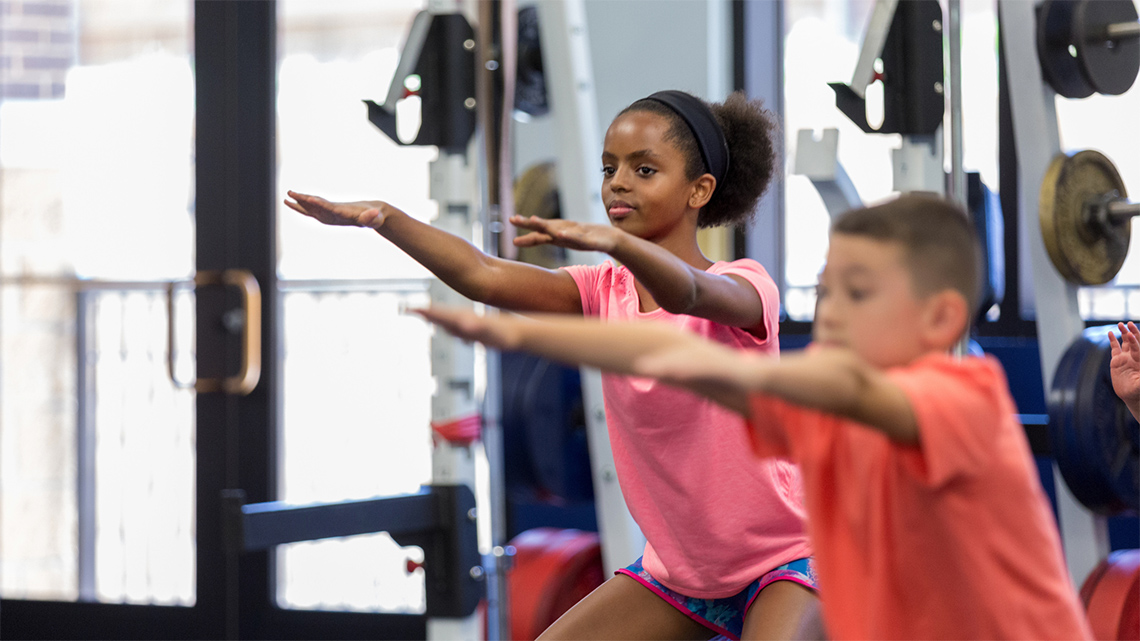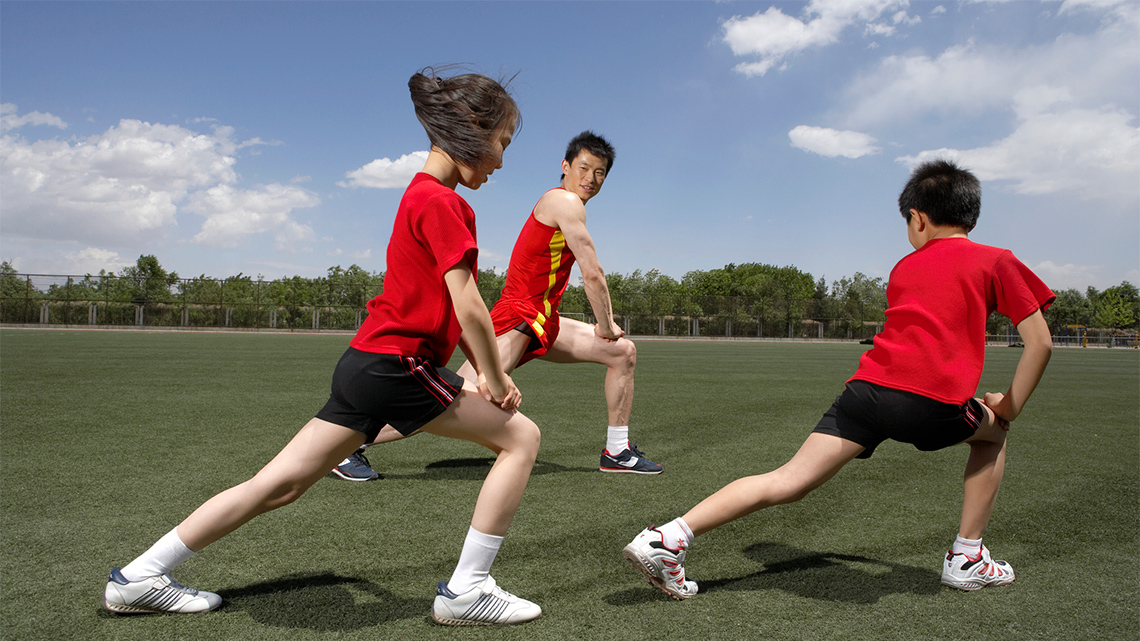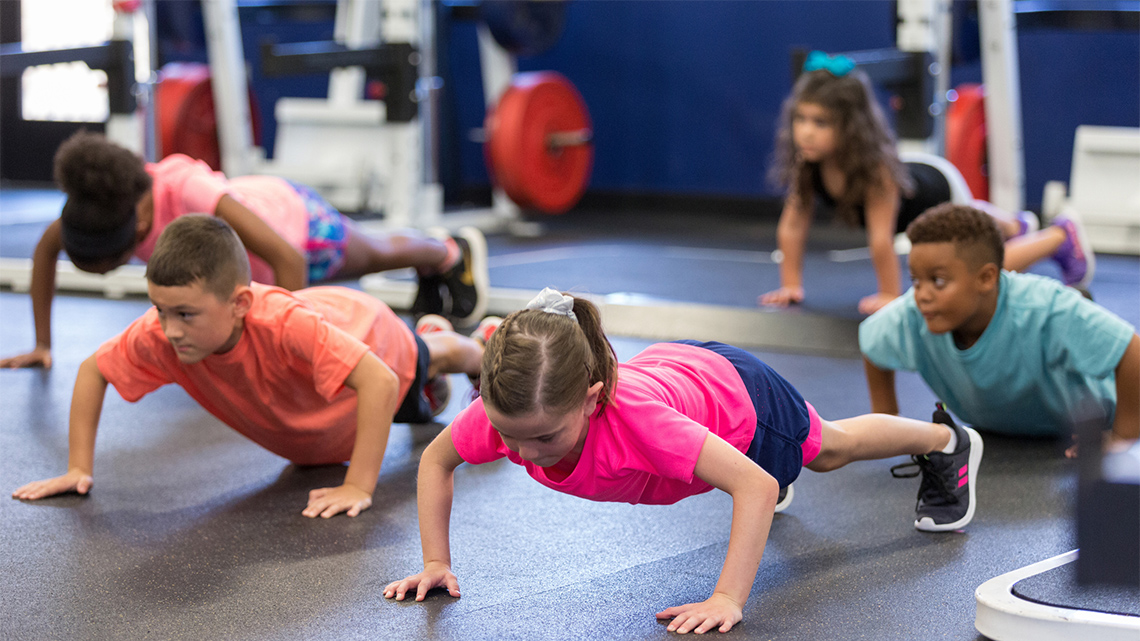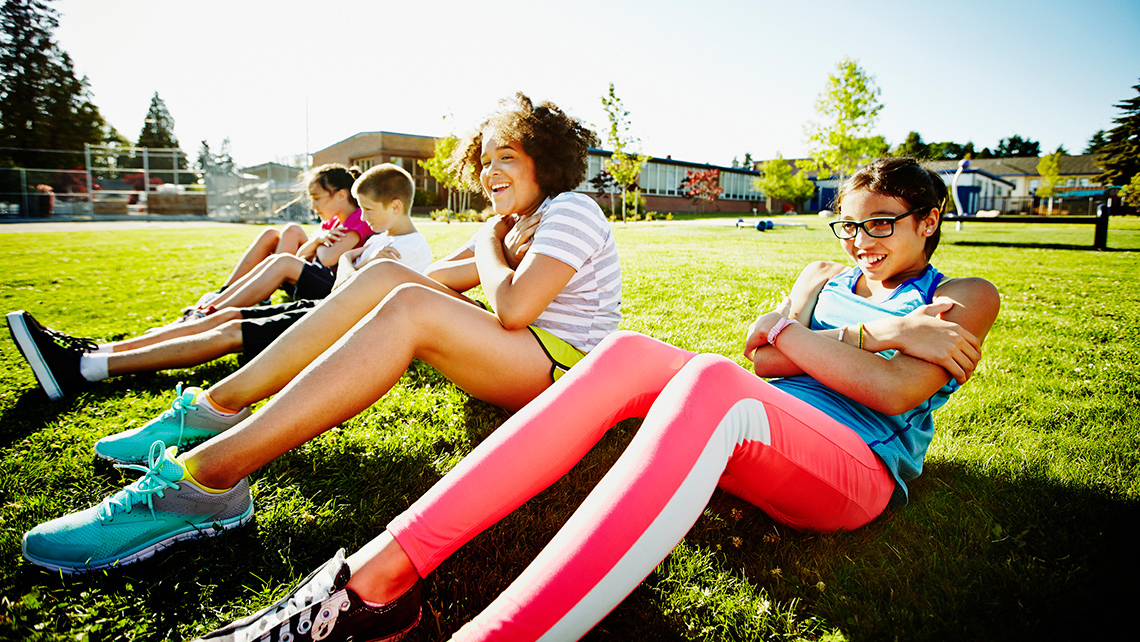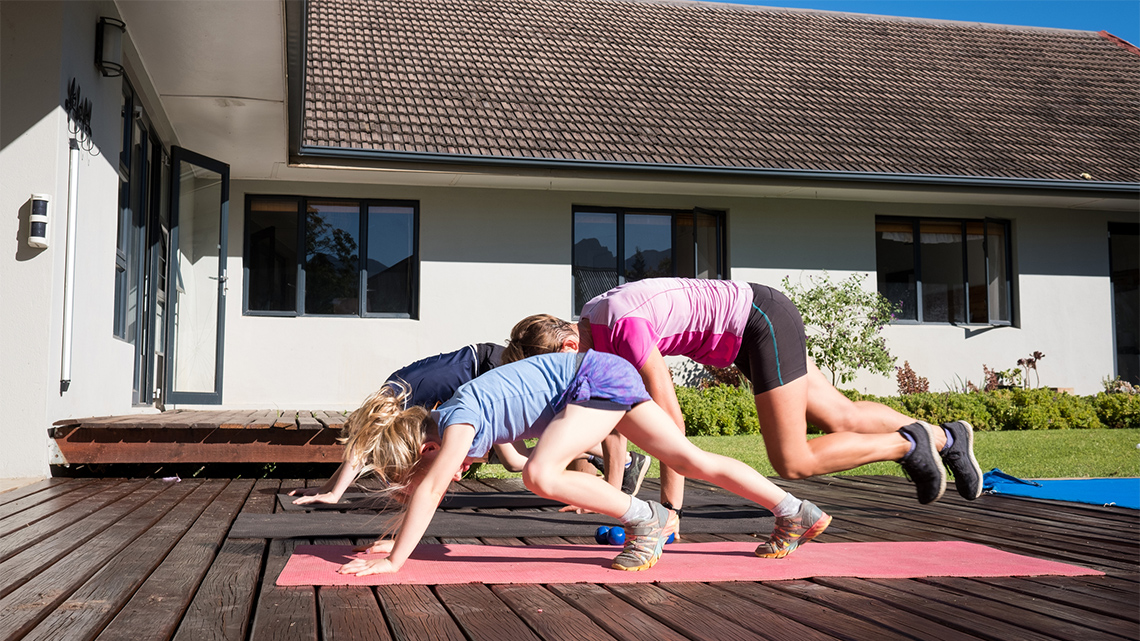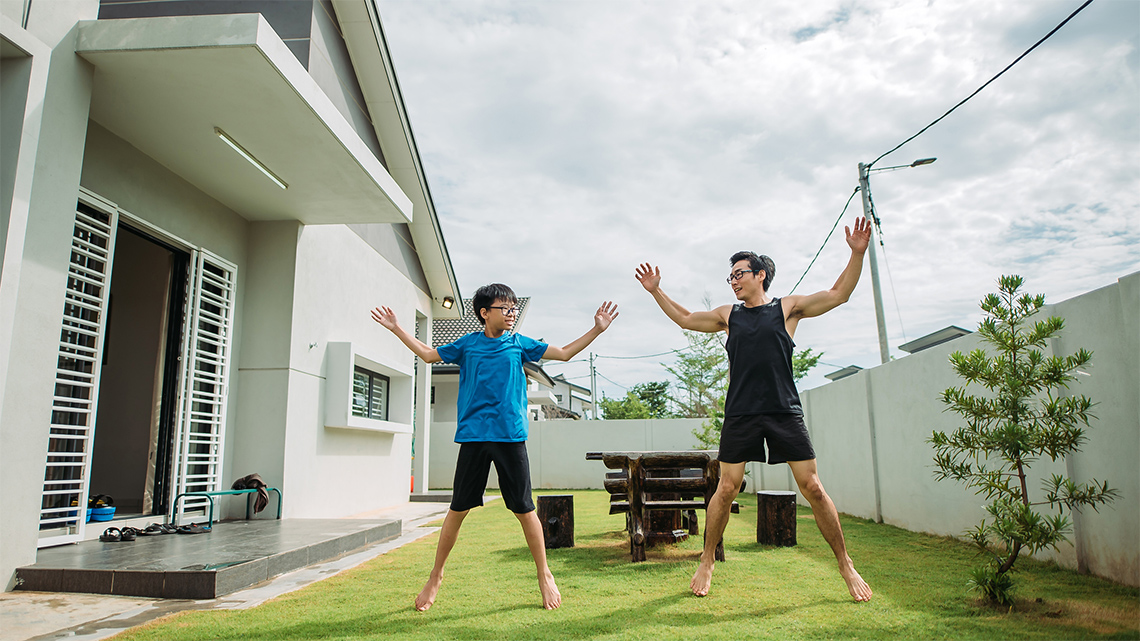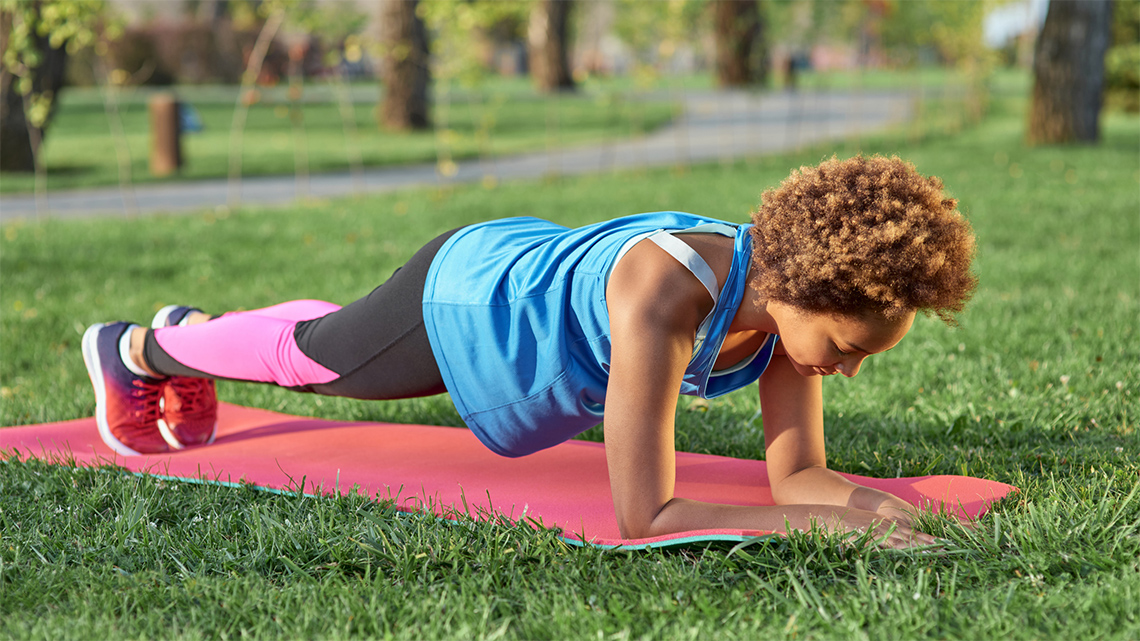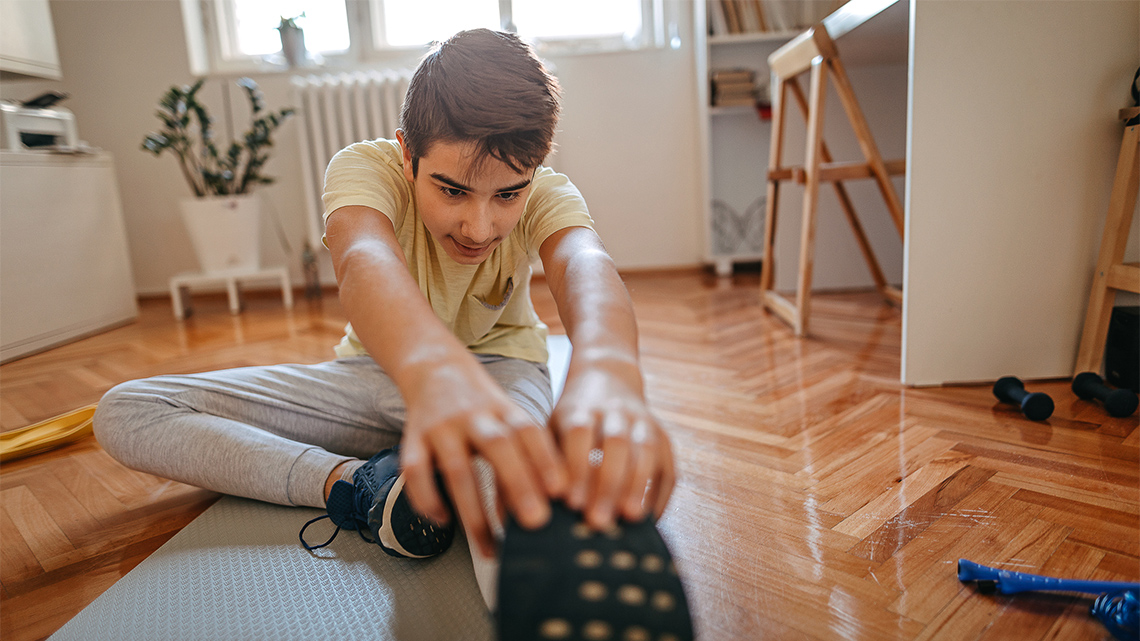Minds On
Let's move!
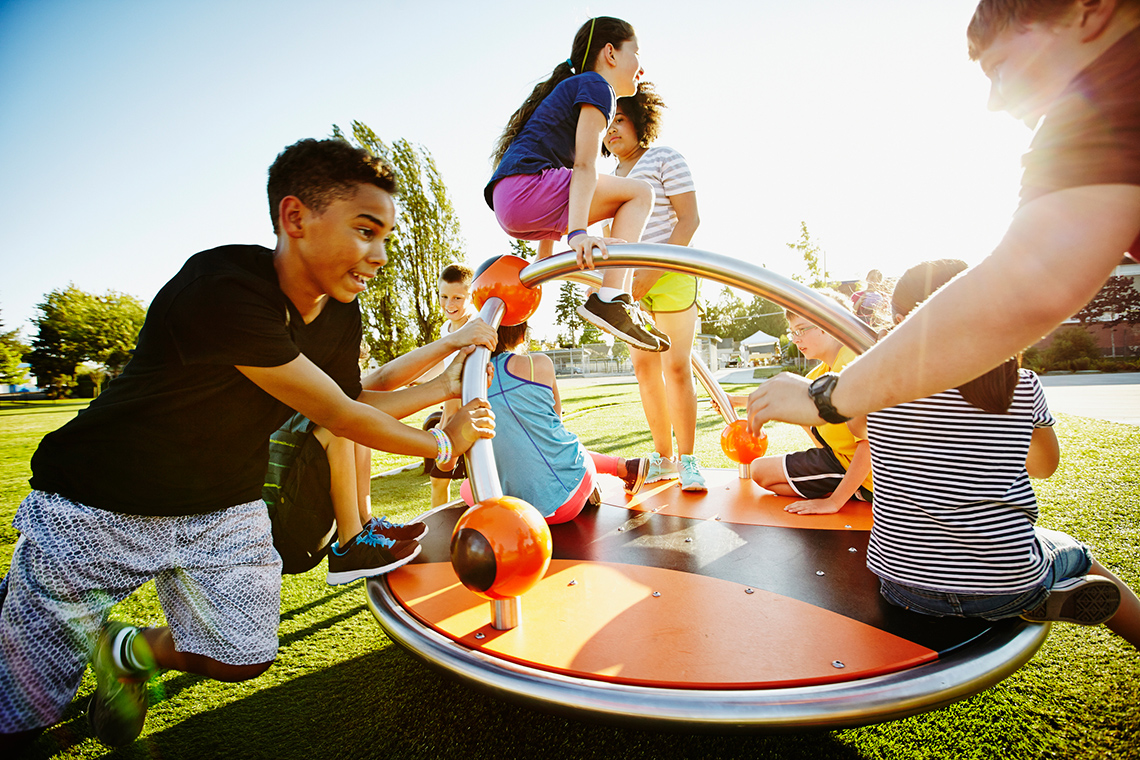
Being active is a great way to keep your body and mind healthy!
By being active, we can relieve our stress, feel happy, sleep better, boost our energy, and the best part is, it is all for free!
Always be sure to do your safety checks before you do an activity.
Safety
Before you begin, consider these safety precautions:
Try It
Your turn!

Play your favourite song and move any way you can for the duration of it.
A song usually lasts from anywhere between 3-5 minutes.
During this time, try your best to remain active. Take needed breaks when necessary.
Press 'Let's Check!' to access a few movement suggestions.
Check out and try some of the following movements:
- dancing
- jumping jacks
- arm circles
- jog on the spot
- pretend to play a sport
- push-ups
- squats
- shake your arms
- shake your legs
- stretch
Notice that all the movements do not require any equipment, just your bodyweight.
After exploring the activity, reflect on the following:
How does your body feel after completing the activity?
Record your ideas in a notebook or another method of your choice.
Action
Bodyweight exercises
What are bodyweight exercises?
It is exactly what you think it is! These are exercises that use the weight of the body to work out with.
Bodyweight exercises are strength training exercises that use your own bodyweight to provide resistance against gravity.
These exercises can increase your strength, power, endurance, speed, flexibility, coordination, and balance.
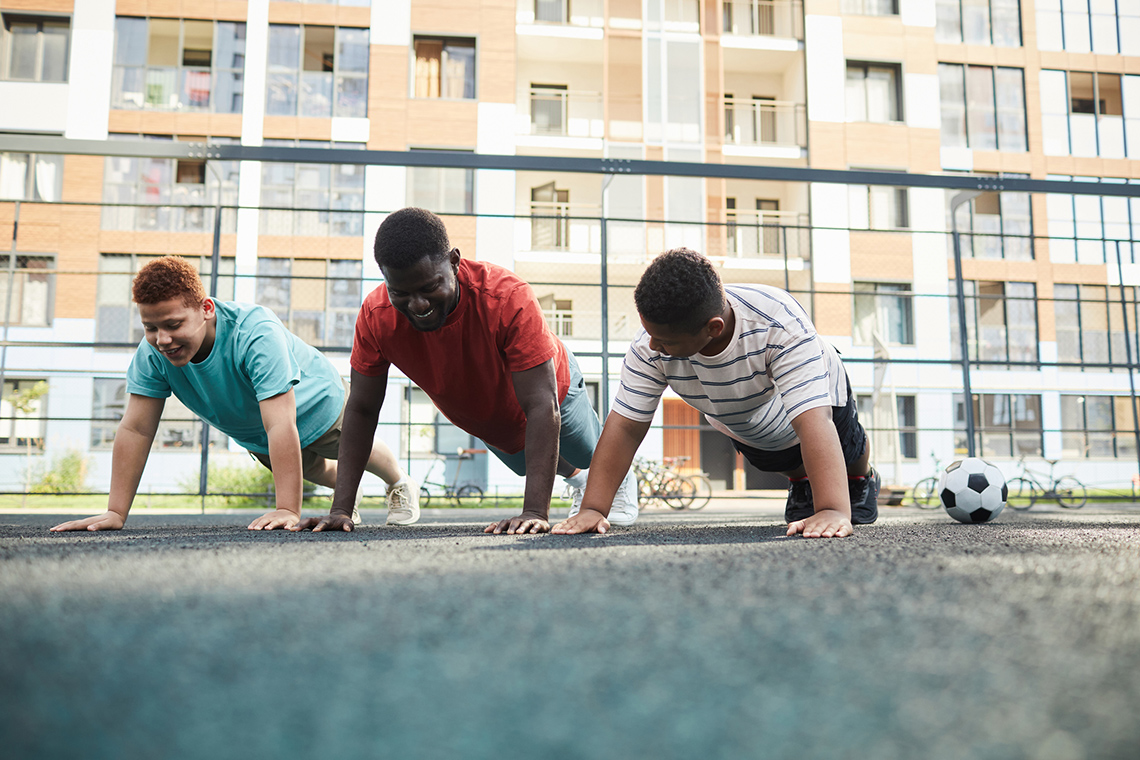
Bodyweight training, which is essentially creating an exercise routine of bodyweight exercises, has become extremely popular because it requires very little equipment, very little space, and can be performed both indoors and outdoors.
These exercises can be modified for whatever fitness level we are. Whether we are starting at zero and trying to do one push-up, or we are a competitive student athlete, bodyweight exercises can be incredibly beneficial for us.
Benefits
Press the following tabs to explore the many benefits of bodyweight exercises.

Try It
Try your best!
Access this video entitled ”Under The Sea 5” to explore an undersea themed workout.
Follow the instructors and participate in this activity to your best of your ability.
Remember to perform your safety check before you begin.
After exploring the workout, reflect on the following questions:
- What about the workout video did you like?
- What about the workout video did you not like?
- Were any of the workouts a bodyweight exercise?
Record your ideas in a notebook or another method of your choice.
Exploring exercises
Let's explore the following bodyweight exercises:
Check out more of the following bodyweight exercises:
Pause and Reflect
Pause and reflect
After checking out the various bodyweight exercises, list three bodyweight exercises that can be performed for each of the following:
- indoors and outdoors with no equipment
- for the upper body
- for the lower body
- to improve balance
Record your ideas in a notebook or another method of your choice.
Modifications
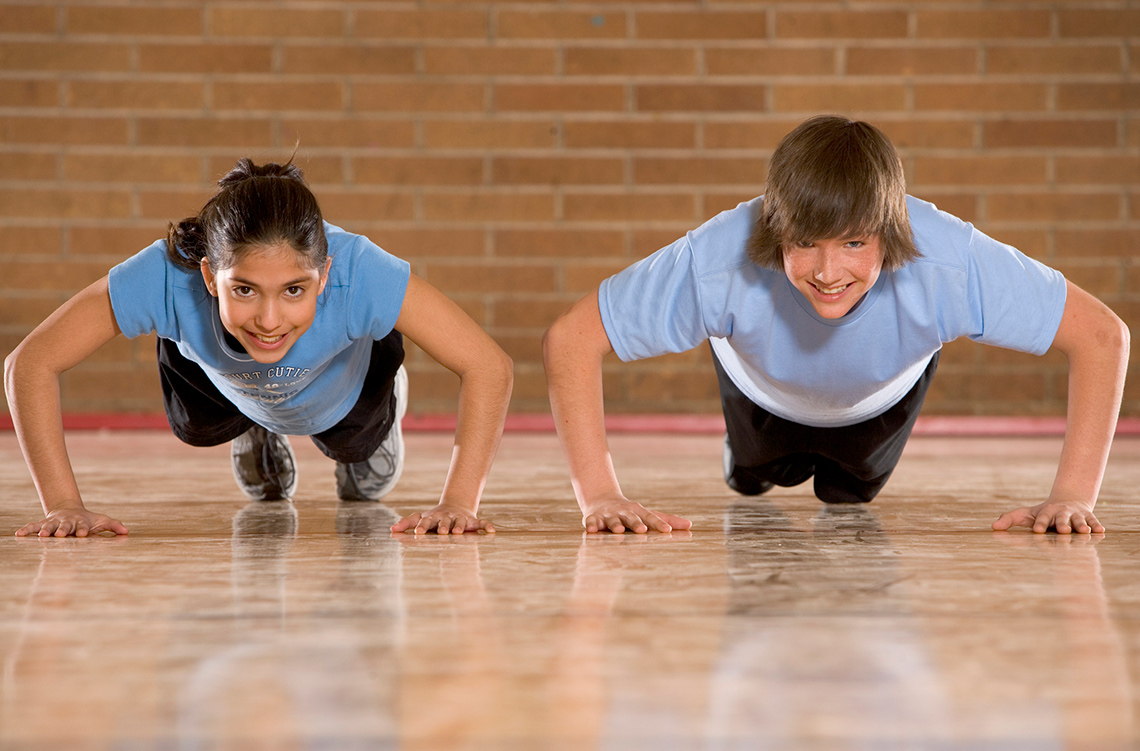
Not everyone can perform exercises in the same way. Bodyweight exercises can be altered or modified to consider a variety of needs and abilities.
For example, modifications to a squat can include:
- only bending a little
- holding the squat position for 3 seconds
- extending arms out while squatting
- use a chair as the squat position (lift body from and into the chair)
- lean against a wall while squatting

Student Success
Think-Pair-Share
How might you modify the push up to meet different needs?
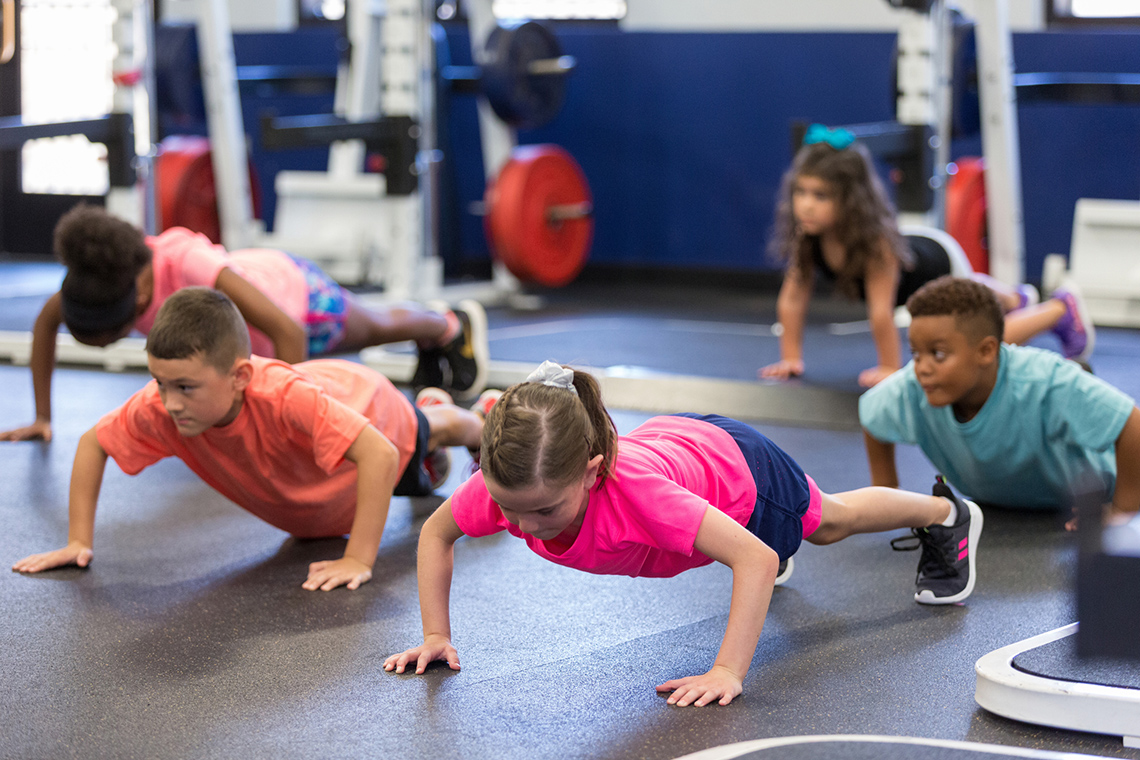
If possible, with a partner, reflect on how the push up can be modified in three possible ways.
Record your ideas in a notebook or another method of your choice.
When you're ready, press 'Let's Check!' to access various push up modifications.

A person is demonstrating four different methods of doing pushups. The first method is the original pushup with legs extended back and hands placed below the shoulders. Then, bend the elbows and lower the chest until it's just above the floor. Then, move back to the start position.
The second method is the knee pushup. Place the knees on the floor, the hands below the shoulders on the floor, and cross the feet. Keep the back straight and bend the elbows until the chest is almost touching the floor. Pause and push back to the start position.
The third method is the wall push up. Place feet and legs together, standing slightly more than an arm's length from a wall with arms straight out in front. Palms should be on the wall at about shoulder-level height and shoulder-width apart, with fingers pointed toward the ceiling. Bend the elbows and begin to lean the body toward the wall until the nose almost touches it. Ensure the back stays straight. Then, push back to the start position.
The fourth method is the incline pushup. Stand in front of a bench or couch, then squat or bend down and place both hands on either side of it with fingers pointing forward. Hands should be about shoulder-width apart. Step the body back into a plank position, one leg at a time. Make sure the body is in a straight line. Next, bend the elbows until chest is aligned with the hands. Then, straighten arms and return to start position.
Note to teachers: See your teacher guide for collaboration tools, ideas and suggestions.
Consolidation
Learning check!
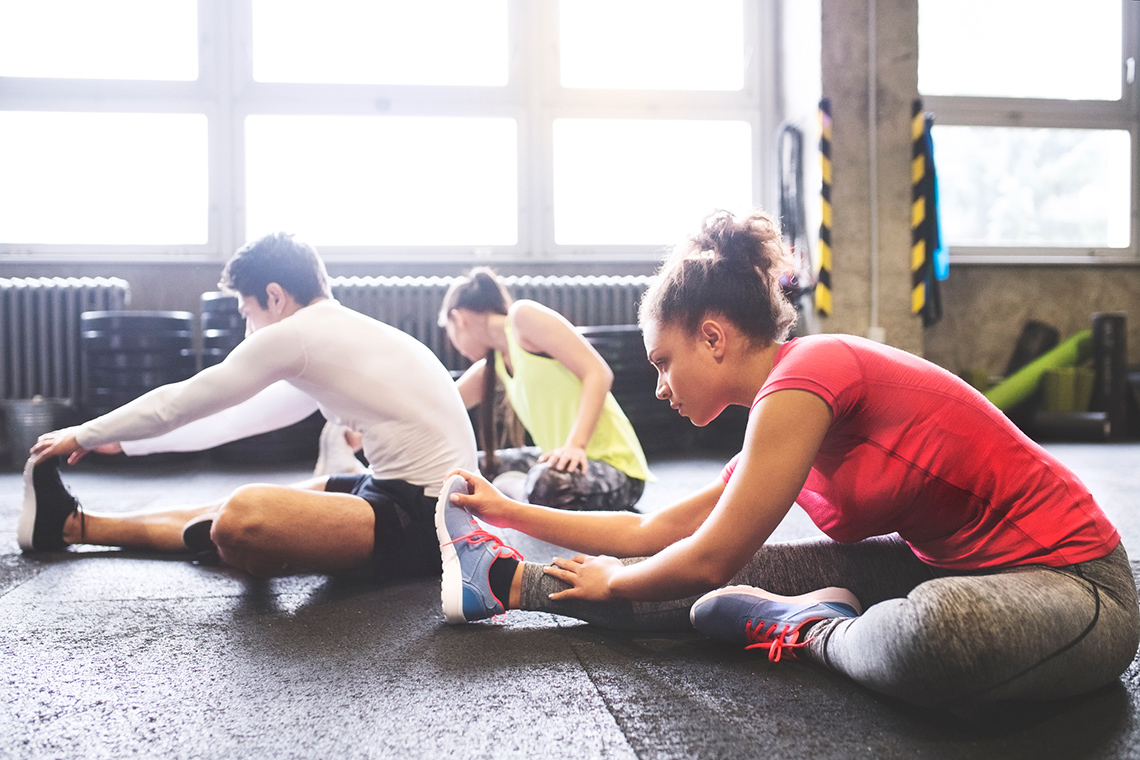
Reflect on the benefits of bodyweight exercises and decide whether each statement is true or false.
Select the correct answer, then press ‘Check Answer' to see how you did.
Exercise modifications
1. Choose four of the bodyweight exercises explored in the Action section, or another bodyweight exercise of your choice.
2. Then, explain how the exercises can be modified for those with different needs and abilities.
3. For each exercise, create at least three modifications.
Complete the Bodyweight Exercise Modifications Activity in your notebook or using the following fillable and printable document. If you would like, you can use speech-to-text or audio recording tools to record your thoughts.
|
1. Bodyweight Exercise Name: |
||
|
Modification A |
Modification B |
Modification C |
|
|
|
|
|
2. Bodyweight Exercise Name: |
||
|
Modification A |
Modification B |
Modification C |
|
|
|
|
|
3. Bodyweight Exercise Name: |
||
|
Modification A |
Modification B |
Modification C |
|
|
|
|
Press the ‘Activity’ button to access Bodyweight Exercise Modifications Activity.
Try It
Give it a try!
If possible, perform each of the exercises, including the modifications that you listed.
Remember to perform your safety check before you begin.
Then, reflect on the following:
- Which modification of each of the exercises was just right for you?
- How do you know?
Record your ideas in a notebook or another method of your choice.
Reflection
As you read the following descriptions, select the one that best describes your current understanding of the learning in this activity. Press the corresponding button once you have made your choice.
I feel…
Now, expand on your ideas by recording your thoughts using a voice recorder, speech-to-text, or writing tool.
When you review your notes on this learning activity later, reflect on whether you would select a different description based on your further review of the material in this learning activity.
